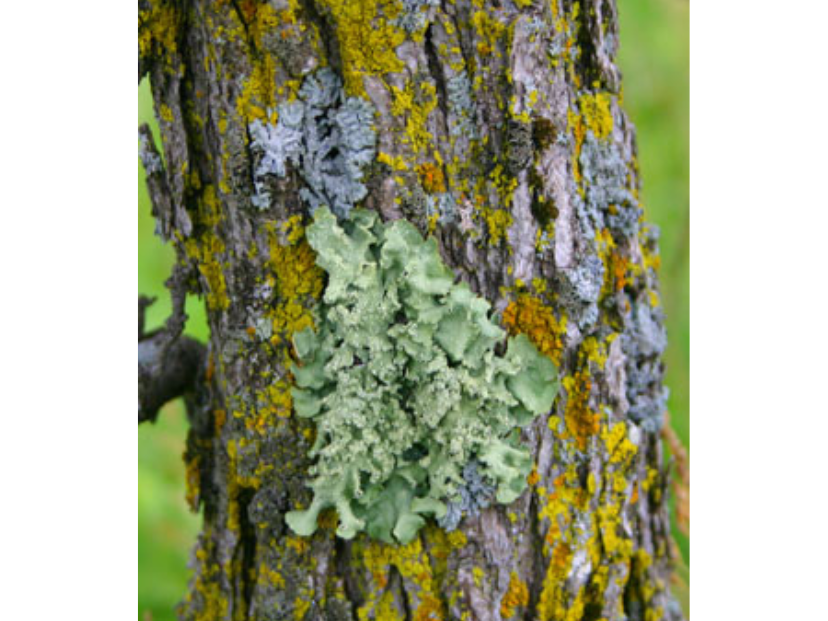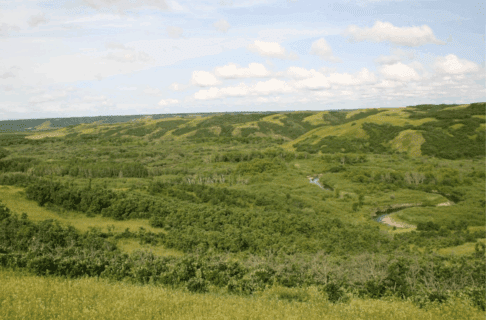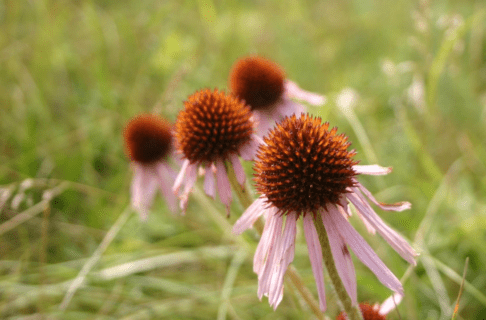Posted on: Friday October 21, 2011
On October 28 a new natural history exhibit on the Colours in Nature will open in the Museum’s Discovery Room. Organisms and minerals representing all the colours of the rainbow will be on display. Unfortunately no flowering plant specimens will be displayed (only photographs) because, unfortunately, most of the plants in our collection represent only one colour: brown. If the exhibit was on the colour brown in nature, boy would I have a lot stuff to show!
The plants weren’t always brown of course. Before they were collected the leaves were bright green and the flowers hot pink, yellow, orange, and purple. Sadly the drying process almost always results in the loss of at least some colour. Age doesn’t help matters either, the older a plant is, the browner it gets.

British Soldier lichens have distinct red caps.

Gold-eye lichens are becoming rare because they are sensitive to air pollution.

The specimens from the Botany collection that ARE on display are fungi, lichens in particular. Lichens are a fascinating group of organisms. They consist of tiny algae or cyanobacteria (the photobiont) living inside the tissue of a fungus (the mycobiont). The relationship is, for the most part, mutually beneficial with the algae photosynthesizing and providing carbohydrates to the fungus and the fungus protecting the algae. This symbiosis enables both organisms to live in harsh environments where they probably couldn’t live independently (like on rock). Some lichens living in really harsh environments (like the Antarctic) are cryptoendoliths, meaning that they live inside the rock, penetrating the tiny spaces in between granite and marble crystals. In fact, some scientists think that if we find life on Mars it may be inside the rocks!
Image: Green, yellow and silvery lichens are common on oak trees.
In some lichens the colour of the green algae inside the fungus shows through, especially when wet. If the lichen dries out, it may look grey or brown. Other lichens produce brightly coloured pigments like the brilliant yellow pulvinic acid or the reddish anthraquinones. Why lichens produce these chemicals is still a bit of a mystery but one of the best hypotheses is that they act as algal sunscreen, protecting the sensitive algae from harmful UV radiation in sunny habitats. For this reason, the brightest lichens in Manitoba can be found on the tundra in the far north as well as on rocks in the grasslands.

The green colour of the algae inside this Cladonia lichen shows through when wet.

Powdered sunshine lichens were traditionally used as a source of yellow dye.
So if I’ve piqued your curiosity, come on down to the Museum to see our collection of brightly coloured lichens (and minerals and brightly coloured birds and butterflies too).






